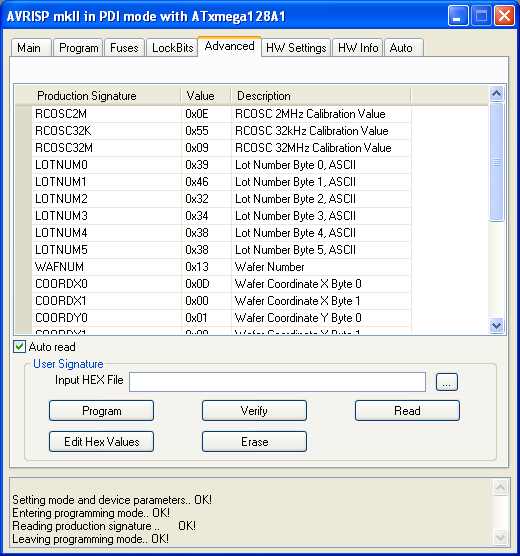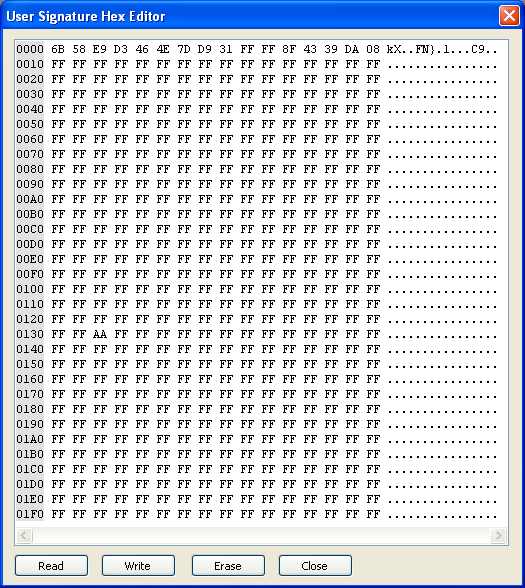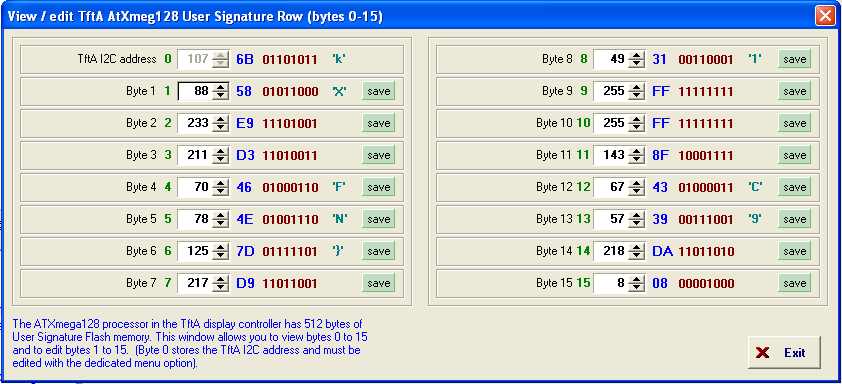
Atmel Studio4 programming window Advanced tab
TftA AtXmega128 User Signature Row (USR)
Hobcat USR editor requires: Hobcat 1.078 TrxAVR 1.67 TftA 2.25 or later.
See also: TftA address configuration
This development arose from the address conflict between the
ISL1220 real time clock and theTftA
colour graphics display - both of which were using I2C address 0x6F (hexadecimal
6F)
The ISL1220 is fixed at 0x6F. The TftA address was coded into TftA and TrxAVR.
The solution to this conflict involved a flexible TftA address which is stored:
User Signature Row
I will refer to this as USR.
USR is 512 bytes of flash memory in TftA's
AtXmega128 processor.
USR is not erased by the erase which happens before
reprogramming of the Xmega.
It therefore can be used for configuration settings.
Editing USR using the programmer
USR can be viewed and edited using the Advanced
tab in Atmel Studio4s programming window
as demonstrated below:

Atmel Studio4 programming
window Advanced tab
Clicking the Edit Hex Values button gives the USR hex editor:

User Signature Row editor
(Studio 4)
This displays the 512 bytes of the USR in hexadecimal
and as ASCII characters.
Byte 0000 stores the TftA I2C address which is here set to
0x6B.
At the time of writing, no other bytes have been assigned, but the
intention is to use some
of bytes 0001 to 000F (1 to 15) to hold TftA configuration information. This
will allow
TftA to be configured using the programmer rather than with the jumpers (of
which we
have already used up the available 5)
Editing the USR from Hobcat
I have added a USR editor to Hobcat's setup menu.
This edits the bytes 1 to 15 with hexadecimal, decimal, binary and ascii presentation
of the data.
On opening the window, all 16 bytes are read from the TftA Xmega and displayed.
Each byte has a separate Save button to write back to the TftA
Xmega.
The data routing is: Hobcat <-> USB <-> TrxAVR <-> I2C <-> TftA .
This editor can only function if TrxAVR can communicate with
TftA - ie: they have matching TftA I2C
addresses. (For this reason, editing of the TftA address
in byte 0 is disabled. This must be edited with
the dedicated TftA
address editor menu option - which simultaneously changes the TftA address in
TftA and TrxAXR - thus retaining the address match after a necessary reboot
)

Hobcat's User Signature Row editor (bytes
1 to 15)